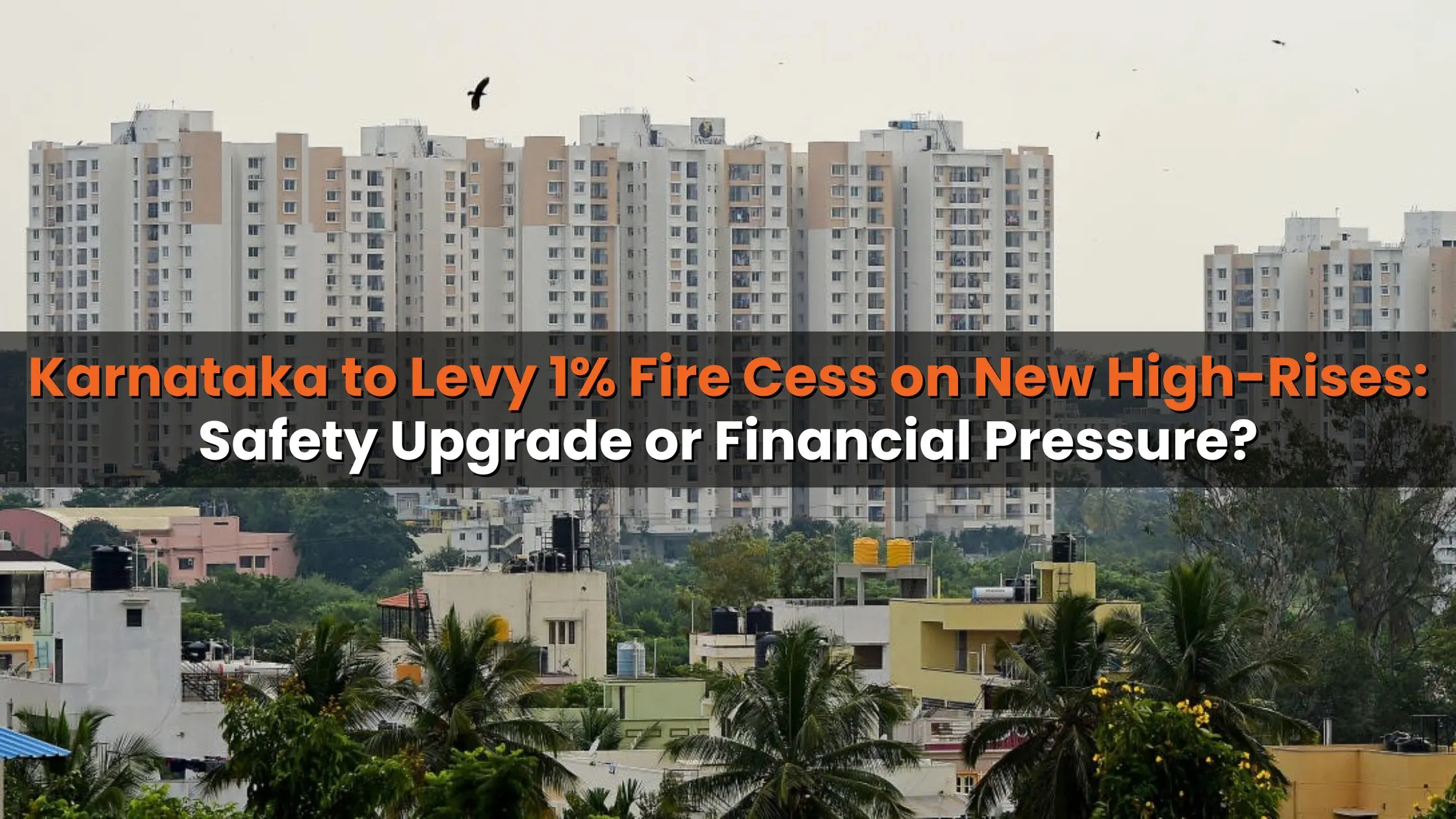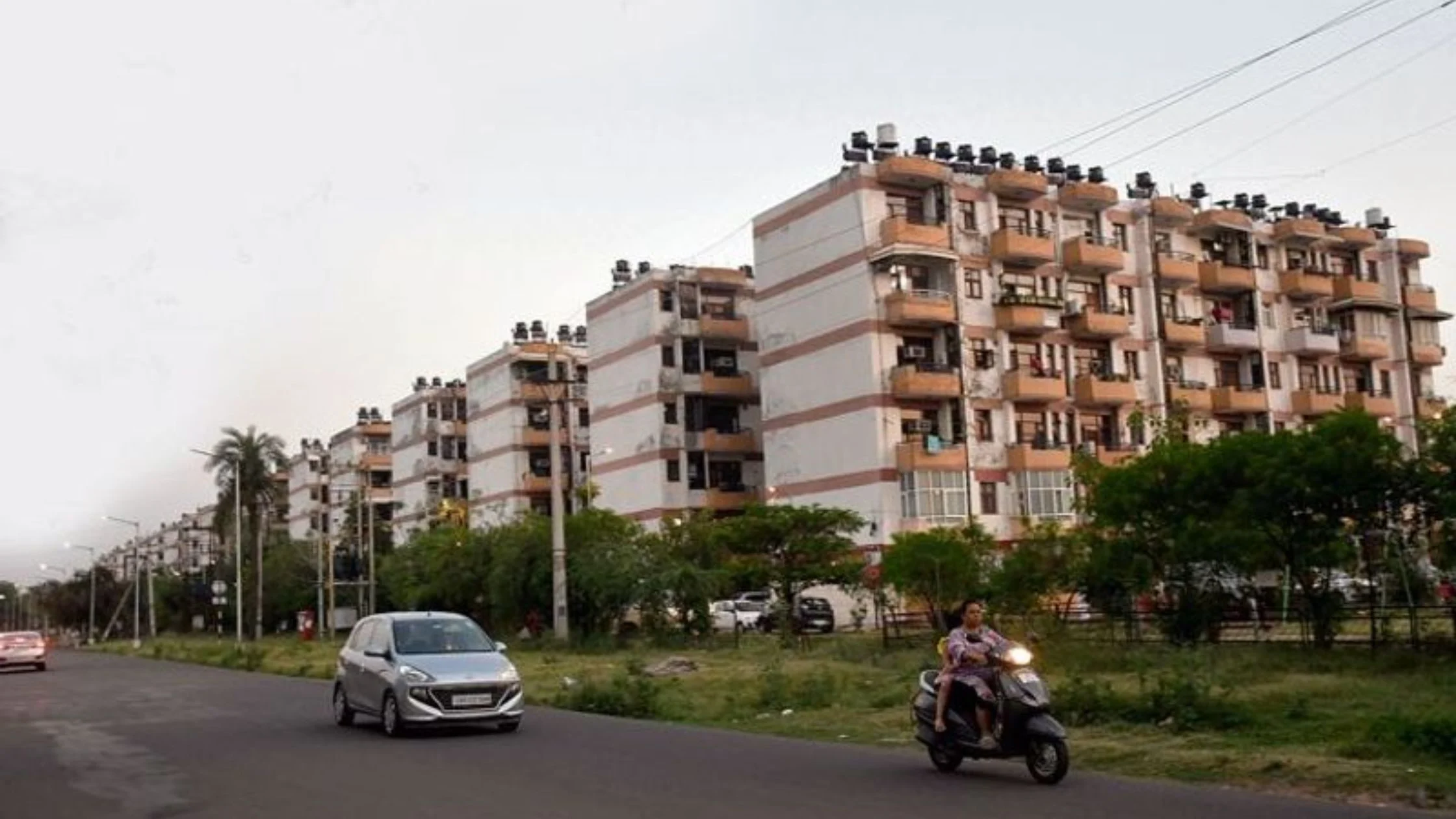Table of Content
In a significant update to its fire safety legislation, the Karnataka government has announced a new provision to levy 1% fire cess on newly built high-rise buildings. This move, aimed at strengthening fire preparedness across urban spaces, is part of the recently passed Karnataka Fire (Amendment) Bill, 2025, amending the original Karnataka Fire Force Act of 1964.
While the intention is to improve emergency response capabilities, real estate stakeholders believe the measure may lead to an increased cost burden for both developers and end users.
What Is the New Fire Cess Policy?
The state cabinet has approved that a 1% fire cess will be charged on the property tax of all newly constructed multi-storey buildings, including residential and commercial projects. This surcharge will be applicable from the date the amended act comes into effect.
According to the amendment, the cess will be:
- Levied only on new constructions classified as high-rises under Section 13 of the Fire Force Act.
- Applicable to structures such as residential towers, hospitals, and industrial complexes.
- Mandatory, with payment liability falling either on builders or property owners, depending on the stage of occupancy or sale.
Also Read: Retail Leasing Drops 6% to 2.24 Mn Sq Ft Across Major Indian Cities in Q2 2025
Who Will Be Affected by the New Fire Cess?
As per the current mandate, the cess will apply to any new high-rise project undertaken across Karnataka. This includes:
- Residential skyscrapers and gated communities
- Commercial office buildings and shopping complexes
- Public infrastructure like hospitals and institutional buildings
- Industrial structures that fall under the fire services jurisdiction
The state government clarified that the 1% surcharge is not optional, and failure to pay may lead to penalties or delays in obtaining No Objection Certificates (NoCs) related to fire safety clearances.
Financial Breakdown and Applicability
The Karnataka to levy 1% fire cess plan links the surcharge directly to the annual property tax payable on a high-rise. This essentially increases the total tax outgo for owners or developers by an additional percentage point.
Here’s an example:
- If the annual property tax is ₹1 lakh for a high-rise unit, the fire cess adds another ₹1,000.
Though it may appear minimal in isolation, experts argue that this adds to a growing stack of levies, especially in urban areas like Bengaluru, where real estate values are already high.
Expert Opinions: Safety vs Affordability
Industry leaders have raised red flags over the cumulative financial impact this move may have. Nesara BS, Chairman of Concorde, expressed concern that the cess, combined with existing expenses, could significantly raise the cost of homeownership.
“With escalating utility bills, solid waste management cess, and now the 1% fire cess, we are seeing a surge in living costs. Bengaluru risks becoming unaffordable for many aspiring homebuyers,” he said.
While the Karnataka to levy 1% fire cess initiative underscores the importance of fire safety, many believe that the government must balance this with incentives or subsidies to avoid making real estate less accessible.
Impact on Homebuyers and Developers
For developers, this new tax adds another line item to their project costing, which could eventually be passed on to buyers in the form of increased property prices.
Buyers, especially in Bengaluru, who already deal with high registration fees, GST on under-construction properties, and high land costs, are likely to feel the pinch. The added cess could deter middle-income households from purchasing new high-rise homes or even push them toward low-rise alternatives.
Comparisons with Other Levies and Charges
Over the years, property buyers in Karnataka have had to navigate multiple government-imposed charges:
- Solid Waste Management (SWM) Cess
- Increased Stamp Duty for High-Value Transactions
- Escalating Development Charges
- High Electricity and Water Deposits
The Karnataka to levy 1% fire cess adds to this growing list, and experts argue that the government must review the cumulative impact of such levies on housing affordability and investment sentiment.
Also Read: India’s Housing Market Turns Premium in H1 2025, with 62% of Sales from ₹1 Crore+ Homes
Conclusion
The move by the Karnataka Cabinet to levy 1% fire cess on new high-rises reflects a proactive approach to fire safety in high-density urban environments. However, it also opens up discussions on balancing safety mandates with affordability, especially in a city like Bengaluru where property costs are already high.
As developers and buyers brace for this additional financial load, it remains to be seen whether the policy will be coupled with broader incentives or reforms to ease the overall tax burden on real estate participants. Until then, stakeholders must factor this new cess into their project planning and investment decisions.
Follow AquireAcers Whatsapp Channel to Stay Updated With The Latest Real Estate News



_1765522271.webp)

_1765444636.webp)

Ans 1. It’s a new surcharge equal to 1% of the annual property tax, applicable to all newly constructed high-rise buildings in Karnataka under the amended Fire Force Act, 2025. The cess will go toward enhancing fire safety infrastructure and emergency response.
Ans 2. The cess will be paid either by developers or property owners, depending on the stage of project completion and sale. It applies to residential towers, hospitals, commercial complexes, and industrial buildings categorized as high-rises.
Ans 3. The fire cess will be enforced from the date the amended act is officially notified. All qualifying new constructions after that date will fall under its purview.
Ans 4. Though seemingly small (e.g., ₹1,000 on ₹1 lakh tax), the cess adds to existing levies like stamp duty, SWM cess, and utility deposits, potentially raising the overall cost of homeownership and making real estate less affordable for mid-income buyers.
Ans 5. As of now, no exemptions or relief measures have been announced. Industry stakeholders are urging the government to consider incentives to balance safety regulations with housing affordability.